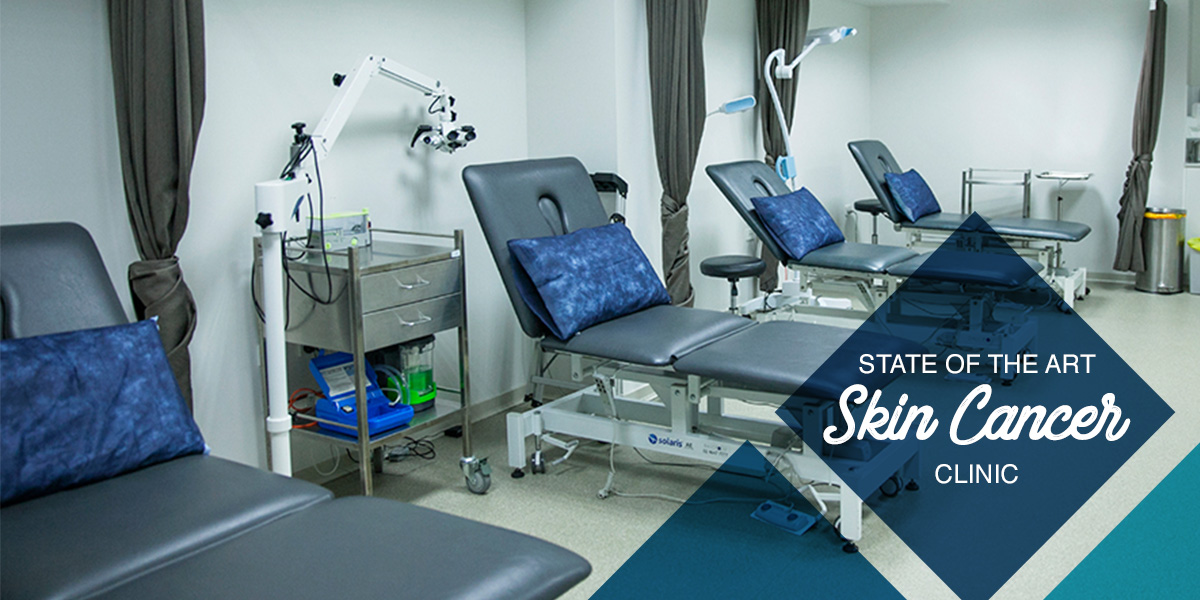Accessible Rabies Vaccine: Services Available in Queensland, Australia
What is Rabies?
Rabies is a viral disease that is often caused by a bite from a rabid animal.1 Once infected, the rabies virus moves the central nervous system and causes fatal inflammation to the brain and spinal cord. Without prompt treatment, it can ultimately cause brain disease and death. Rabies often occur in wild animals like bats, raccoons, skunks, and foxes, although any mammal can get rabies.
Prevalence and global impact
Rabies is estimated to cause 59,000 human deaths in more than 150 countries across the globe. The majority of these cases occur in African and Asian countries, 4 causing death towards both humans and animals due to inadequate access to public health resources and preventative treatment. About 99% of human cases were caused due to canine rabies from infected dogs.5
Australia, New Zealand, Japan, South Korea, Singapore, the United Kingdom, North America, and some parts of Latin America and the Pacific Islands have successfully eliminated rabies because of rabies control measures and global rabies initiatives.6
Types of Rabies
While rabies often presents with a well-defined set of symptoms, the virus can manifest in different ways depending on the source of infection. Let’s explore the variations of rabies beyond the classical form.
2. Bat-associated rabies
Bats are one of the most commonly reported animals to be reservoirs for rabies. This is because 11 out of the 12 species of the lyssavirus genus are isolated from bats. Rabid bats often show abnormal behaviour, such as extended outdoor activity in the daytime. They may also be grounded, paralyzed or may bite a person or animal.
3. Terrestrial rabies
- While mammals are susceptible to the rabies virus, only a few species are reservoirs for the disease. Terrestrial rabies is described as a group of distinct rabies virus variants that have been identified in terrestrial mammals, such as raccoons, skunks, and foxes. In addition to these, several species of insectivorous bats are also terrestrial reservoirs for rabies.12
Book Appointment
or
Call (07) 5599 1400
More About Us!
Clinic Hours:
- Monday – Friday 8:30am – 5pm
- Saturday 8:30am – 2.30pm
- Sunday 9:00am – 12.00pm
- Public Holidays – Please call the centre for more information.
Email us: office@coolmedical.com.au
Find us at 91 Griffith Street, Coolangatta, QLD
What is Rabies: Symptoms, Treatment, and Prevention
Symptoms of Rabies
Rabies is a deadly viral disease that primarily spreads through the bite of an infected animal. Recognising the symptoms and understanding the progression of the disease is crucial for effective prevention and treatment. Below are the key symptoms of rabies, including the incubation period, early symptoms, neurological symptoms, and the differences between furious and paralytic forms of the disease.
-
Incubation period
To ensure rabies prevention, early treatment is required to prevent the rabies virus from reaching the central nervous system. When humans are in direct contact with a rabid animal, the incubation period is typically between 20 and 90 days. Incubation time may vary depending on the site of inoculation, the severity of the wound, and the amount of virus introduced.13
-
Early symptoms
Rabies symptoms can appear within a few days after the bite happens. The early signs of rabies are often similar to flu-like symptoms, such as weakness, fever, or headache. There also may be discomfort described as a prickling, or an itching sensation at the site of the bite. These symptoms can last for several days. Without prompt rabies treatment, the virus will spread throughout the body, and eventually progress to cerebral dysfunction, anxiety, confusion, agitation and eventually death.14
-
Neurological symptoms
When left untreated, rabies can damage the central nervous system, specifically the brain and the spinal cord. When the rabies virus progresses, it can lead to cerebral dysfunction, anxiety, confusion, and agitation. Severe neurological symptoms also involve delirium, abnormal behaviour, hallucinations, hydrophobia (fear of water), and insomnia.15
-
Furious and paralytic forms
When neurological symptoms occur from rabies cases, they are clinically classified in two forms: furious or paralytic.
Furious rabies symptoms may come and go with periods of calm in between. The symptoms usually last a few days to a week.16
Furious rabies symptoms
- Two different-sized pupils (anisocoria)
- Facial paralysis
- Muscle twitching
- Fever
- Racing heart (tachycardia)
- Agitation and aggression
- Restlessness
- Seizures
- Hallucinations
- Hyperventilation
- Excessive salivation
- Hydrophobia
- Aerophobia
- Delirium
Unlike furious rabies, paralytic rabies runs a less dramatic but longer course of symptoms up to a month. The body eventually loses control leading to muscle weakness, which can progress into a coma and eventually death.17
Paralytic rabies symptoms
- Headache
- Neck stiffness
- Weakness, begins at the area of the bite and progresses to other body parts
- Tingling, “pins and needles” or other strange sensations
- Fever
- Paralysis
- Coma
Rabies Diagnosis
Due to the disease's severe progression, diagnosing rabies accurately is essential in order to provide prompt treatment. Here are the different methods used for diagnosing rabies in humans—each approach involving techniques and sample types to ensure an accurate and comprehensive assessment of the rabies virus.
Clinical evaluation
To diagnose rabies, several tests are required in humans because no single test is sufficient. Physical tests are performed by taking samples from the body18 to observe any irregularities or changes in the body.
Serological assays, also known as antibody tests, are not recommended for rabies diagnosis in humans and animals as virus-specific antibodies in serum tend to appear relatively late after the onset of clinical signal. Serological tests are only performed to help evaluate the immune response to human and animal rabies vaccines.19
Laboratory tests
Several laboratory tests are performed by taking samples of saliva, serum, spinal fluid, and skin biopsies of hair follicles at the nape of the neck. A saliva test can be done for virus isolation or reverse transcription followed by RT-PCR, whereas the serum and spinal fluid are tested for antibodies to rabies virus. Skin biopsy specimens are examined for rabies antigen in the cutaneous nerves at the base of hair follicles.
Post-mortem diagnosis
For diagnosis after death requires a virus antigen in infected tissues preferably brain smears or touch impressions collected from a biopsy. A virus antigen is considered to be a gold-standard diagnostic technique to detect rabies by a fluorescent antibody test (FAT). 20
Treatment and Management of Rabies
The rabies virus is a fatal disease that can cause severe physical and neurological effects to the body which will lead to death if not treated promptly. Effective treatment and management of rabies are necessary to prevent the disease's progression once exposure has occurred. The following are various strategies for rabies treatment:
Post-exposure prophylaxis (PEP)
Post-exposure prophylaxis (PEP) is a 4-dose course that is to be administered as soon as possible for rabies treatment. This acts as an antirabies serum to slow down or prevent the progression of the virus moving into the central nervous system. A dose of human rabies immune globulin (HRIG) and rabies vaccine are given on the day of the rabies exposure, this is then followed by a dose of vaccine given again on days 3, 7, and 14.
Rabies immunoglobulin
Human rabies immune globulin (HRIG) is administered at the beginning of anti-rabies prophylaxis and to previously unvaccinated persons. The rabies immune globulin provides immediate protection for people who have not been immunised against the rabies virus while the body's immune system responds to the vaccine.
This offers body protection until it can respond to the vaccine by actively producing antibodies of its own. Never administer HRIG and the first dose of rabies vaccine into the same anatomical site.21
Experimental treatments
Today, experimental treatments are researched and tested to explore other possible treatments for the rabies virus. A study suggests that the F11 monoclonal antibody could become a possible cure for human rabies. This is because antiviral monoclonal antibodies like F11 are believed to neutralise the virus by binding it and preventing it from further infecting cells and tissues.22
Impact on Humans and Animals
Rabies is a deadly virus that poses a significant threat to both humans and animals worldwide. Globally, it is estimated to cause 59,000 human deaths in more than 150 countries.4 While uncommon in some regions, it continues to cause tens of thousands of deaths annually, primarily in Asia and Africa.
-
Human fatalities
In Australia, there have been three recorded cases of human infection with the Australian bat lyssavirus, all in Queensland: two of which were recorded in the 1990s and one in 2013. All three cases died from the infection.23 The rabies virus causes tens of thousands of deaths early mainly in Asia and Africa, 40% of whom are children under 15 years of age.24
-
Wildlife and domestic animals
The impact of the rabies virus can be more harmful to wildlife because of the higher risk of exposure to pathogens especially when it can spread rapidly and result in high mortality rates. Animals such as bats, raccoons, skunks, and foxes are terrestrial reservoirs for rabies.
For domestic animals, dogs are the main source of human rabies deaths, contributing up to 99% of all rabies transmissions to humans. Rabies can be prevented through vaccination of dogs and prevention of dog bites.
-
Risks to healthcare professionals
Despite rabies not being found in Australia, the disease can still cause potential impacts on public health and trade should it be. Healthcare workers who care for patients with rabies do not pose a risk to their loved ones or their community. However, any exposure to the rabies virus such as being bitten by a potentially infectious patient, or having a patient's saliva come into direct contact with a person's eyes, mouth, or an open cut on the skin must seek prompt medical attention.
What Are The Public Health Measures?
Implementing strong public health measures is crucial for preventing the spread of rabies and protecting both human and animal populations. The following strategies are used to reduce the risk of rabies transmission and ensure effective disease control:
-
Surveillance and reporting
Because rabies is a notifiable disease, the Australian government monitors cases through the National Notifiable Diseases Surveillance System (NNDSS). While the rabies virus has not been present in Australia for several years, surveillance and reporting is one of the measures done to ensure rabies prevention for both humans and domesticated animals.
-
Vaccination campaigns for pets
Vaccination campaigns play an impactful role in rabies prevention by immunising both domestic pets. By encouraging opportunities of immunity, these campaigns break the transmission cycle of the virus and reduce the risk of human exposure while saving lives through proactive disease control measures.
-
Wildlife control programs
Wildlife control programs prevent rabies by managing populations of reservoir species like raccoons and bats. By monitoring wildlife species, habitat modification, and humane removal, these programs reduce the likelihood of rabies transmission to humans and domestic animals, effectively preventing disease spread at its source.
How to Prevent Rabies?
Preventing rabies is critical because of it’s high fatality rate when it is not treated or contained once symptoms appear. By understanding and implementing the need for community education, vaccination, and other initiatives, we can help prevent transmission of the virus.
Pre-exposure prophylaxis (PrEP)
Pre-exposure prophylaxis (PrEP) involves vaccinating individuals who are at high risk of rabies exposure, such as veterinarians and animal handlers. This preemptive measure enables the body’s immune system to neutralise the virus upon exposure, providing a critical defence against rabies infection and potentially saving lives through proactive protection.
Post-exposure prophylaxis guidelines
Post-exposure prophylaxis (PEP) consists of a dose of human rabies immune globulin (HRIG) and rabies vaccine given on the day of the rabies exposure, and then a dose of vaccine given again on days 3, 7, and 14.
Importance of timely treatment
Timely treatment is critical for rabies due to the virus’ capabilities of moving to the central nervous system, causing severe damage to the brain and the spinal cord. From experiencing physical flu-like symptoms as well as the neurological effects, rabies will cause death when left untreated.
Protect Yourself and Your Loved Ones Against Rabies
While vaccination against rabies is especially important for those at higher risk, such as veterinarians, animal handlers, and people in areas with high rabies exposure, everyone plays a crucial role in minimizing the spread and impact of this deadly disease. It takes the effort of the whole community to achieve protection against rabies. By getting vaccinated and avoiding contact with wild or stray animals, you are protecting not only yourself but also your family and loved ones.
Coolangatta Medical Centre is committed to protecting individuals and the broader community by providing comprehensive rabies vaccinations to people from all walks of life. By prioritizing accessibility, we can build a healthier community where everyone can protect themselves and others against vaccine-preventable diseases like rabies.
Our Team of GP Doctors
Take an active role in your health and let our team of doctors, dieticians, and nurses at Coolangatta Health Clinics help you achieve optimal health and Whooping Cough prevention
Related Medical Services We Offer:
At Coolangatta Medical Centre, we also offer many other specialised care for vaccinations and overall family health care to keep you and your loved ones healthy. Book your appointment to visit our clinic at Gold Coast.
To see more of our other medical services, click here.
Payment Methods:
Full fee upfront is payable on the day of your appointment and will be processed with a credit/debit card token provided at the time of booking.
Medicare rebate is processed for you on your behalf by the administration team and will go back into the account that you have nominated with Medicare within 24 to 48 hours. For more information about Medicare rebates, see our FAQs page.
Out of pocket fee is the amount of money that you will be out of pocket after Medicare has processed your rebate.
Areas We Serve
Coolangatta Medical Centre services many local communities on the Gold Coast as well as Northern NSW. If you live in or nearby the following suburbs, Coolangatta Medical Centre is easily visited from the location:
- Tweed Heads
- Tweed Heads South
- Tweed Heads West
- Bilinga
- Cobaki Lakes
- Tugun
___
Conclusion
- Rabies is a viral disease that is often caused by a bite from a rabid animal.
- The rabies virus causes physical and neurological symptoms that can lead to death.
- Rabies can be prevented and treated when diagnosed promptly.
Rabies prevention is essential due to its high fatality rate once symptoms appear. The lack of prompt diagnosis and treatment can be fatal. By raising awareness about prevention measures such as rabies vaccination campaigns, wildlife control programs, and pre-exposure prophylaxis, we can prevent transmission and save lives. This also applies to responsible pet ownership, including regular vaccinations and proper containment for domesticated animals. In doing so, we protect both pets and humans from this deadly disease, fostering safer communities for all.


 Dr Mary McDevitt
Dr Mary McDevitt Dr Kerrie Davis
Dr Kerrie Davis Dr Michaelia Verbeek
Dr Michaelia Verbeek Dr Russell O’Brien
Dr Russell O’Brien
